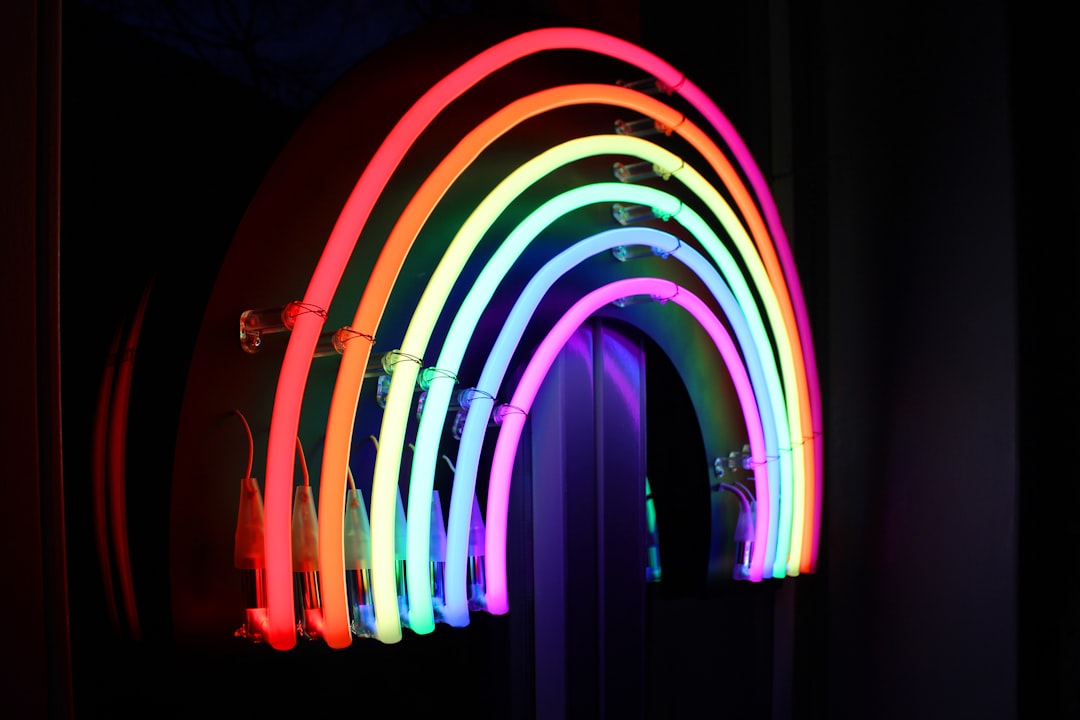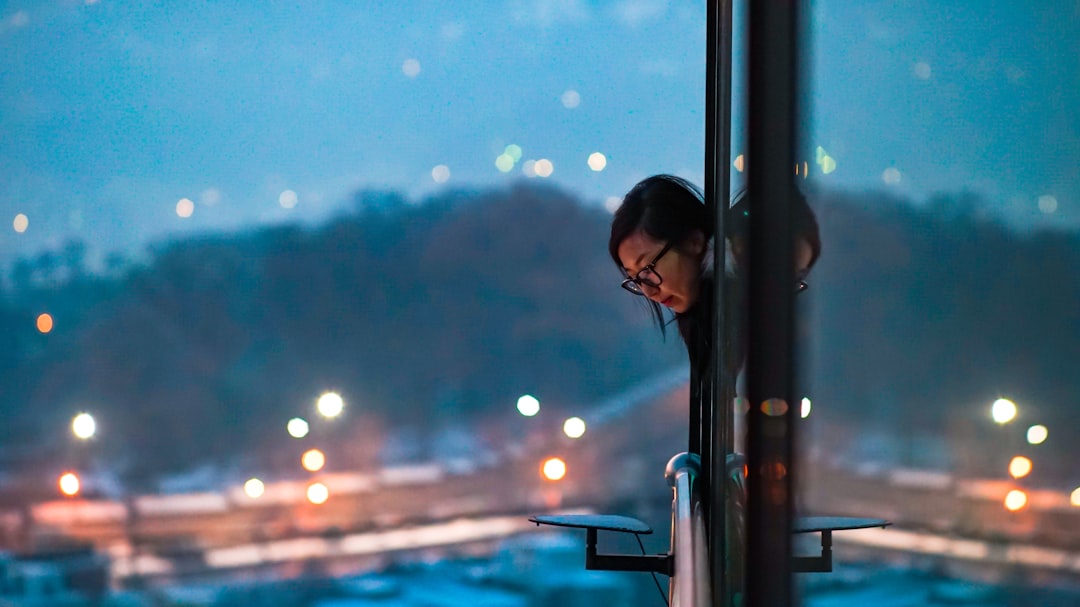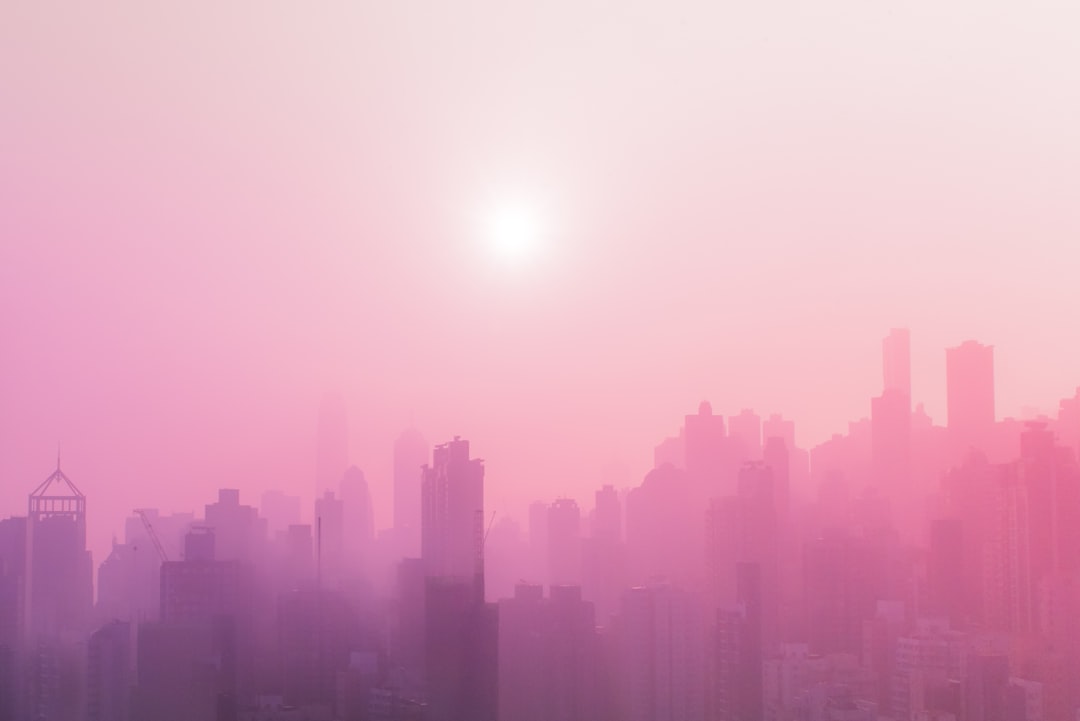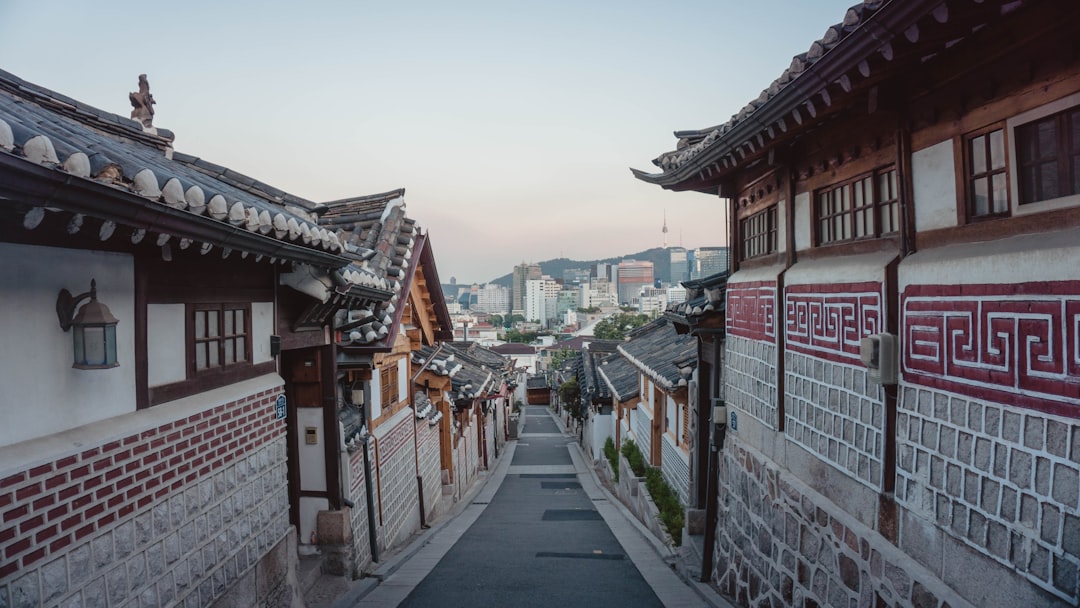Seoul Searching: A Local’s Guide to Exploring South Korea’s Vibrant Capital
Seoul Searching: A Local's Guide to Exploring South Korea's Vibrant Capital - Shop Till You Drop at Myeongdong Shopping District

No trip to Seoul is complete without a visit to Myeongdong Shopping District, located in the heart of the city. This vibrant shopping mecca is packed with stores selling the latest Korean fashion trends, beauty products, and tasty street food. With major department stores, international brands, and small boutiques lining the streets, Myeongdong offers something for every taste and budget.
One of the best parts of shopping in Myeongdong is experiencing Korean fashion firsthand. Korean style is famous for its bold prints, edgy silhouettes, and playful aesthetic. Head to one of the larger department stores like Lotte or Shinsegae to browse popular Korean brands like Stylenanda, Mixxmix, and Needle. Don't be afraid to try on some of the bolder pieces – that's part of the fun of Korean fashion! The staff are usually happy to help style you.
After updating your wardrobe, head to the myriad beauty shops for the latest Korean skin care and makeup. Brands like Innisfree, Etude House, and Laneige have revolutionized the global beauty industry with their innovative products and cute packaging. Test out sheet masks, water-based gels, essences, and BB creams galore. With so many options it can be hard to choose, so don't be shy to ask for samples.
Once your shopping bags are full, refuel with some classic Korean street food. Hotteok, a sweet pancake stuffed with brown sugar, nuts, and cinnamon, is a delicious warm treat on a cold day. Egg bread provides a savory, fluffy alternative. And don't leave without trying tteokbokki, chewy rice cakes smothered in a spicy sauce. Pair it with an ice-cold Korean beer for the perfect snack.
What else is in this post?
- Seoul Searching: A Local's Guide to Exploring South Korea's Vibrant Capital - Shop Till You Drop at Myeongdong Shopping District
- Seoul Searching: A Local's Guide to Exploring South Korea's Vibrant Capital - Admire Traditional Architecture in Bukchon Hanok Village
- Seoul Searching: A Local's Guide to Exploring South Korea's Vibrant Capital - Explore Seoul's Modern Side in Gangnam
- Seoul Searching: A Local's Guide to Exploring South Korea's Vibrant Capital - Take in the Views from Namsan Tower
- Seoul Searching: A Local's Guide to Exploring South Korea's Vibrant Capital - Escape the City at Bukhansan National Park
- Seoul Searching: A Local's Guide to Exploring South Korea's Vibrant Capital - Experience Korea's Imperial Past at Gyeongbokgung Palace
- Seoul Searching: A Local's Guide to Exploring South Korea's Vibrant Capital - Bar Hop in Trendy Itaewon Neighborhood
- Seoul Searching: A Local's Guide to Exploring South Korea's Vibrant Capital - Taste Seoul's Street Food Scene in Gwangjang Market
Seoul Searching: A Local's Guide to Exploring South Korea's Vibrant Capital - Admire Traditional Architecture in Bukchon Hanok Village

Step back in time amid the winding alleyways and traditional homes of Bukchon Hanok Village. Located between Gyeongbokgung Palace and Changdeokgung Palace, Bukchon offers a beautiful glimpse into Seoul's past. As one of the city’s best preserved historic neighborhoods, this area is home to hundreds of hanoks – traditional Korean houses with tiled roofs, wooden floors, and paper windows.
Wandering the narrow streets lined with these hanoks is like walking through a living museum. Each one has been carefully preserved to maintain its original charm and architecture. Look out for the stylized eaves gracefully curved upwards on the ends of the roofs. Admire the lattice woodwork designs on doors and windows. Marvel at the stone walls, sometimes decorated with intricate patterns.
Venturing inside one of the hanoks opens a window into traditional Korean living. Anjeongjeon Hall is a guest space lined with ornate furniture where families would receive visitors and enjoy conversations over tea. Haengrangchae rooms have wide windows to appreciate views of the gardens. Ondol-heated floors provided warmth during Korea’s icy winters.
For a hands-on cultural experience, visitors can stay overnight at one of Bukchon Hanok Village’s guesthouses. Sleeping on the floor mattress, wearing a hanbok, and partaking in a traditional tea ceremony provides an immersive way to embrace history.
To fully appreciate Bukchon Hanok Village’s treasures, go on a guided tour. Knowledgeable local guides will point out hidden gems and share engaging stories about the neighborhood. They can recommend the best streets and alleys to meander down for maximum scenic impact. Guides also know the perfect spots to snap that quintessential Bukchon Instagram photo.
Seoul Searching: A Local's Guide to Exploring South Korea's Vibrant Capital - Explore Seoul's Modern Side in Gangnam

While Seoul bursts with historic sights and traditional heritage, no visit to the capital is complete without exploring its modern, lively side in Gangnam. Made globally famous by Psy’s 2012 earworm pop song of the same name, Gangnam is Seoul’s center for contemporary culture, architecture, nightlife, and shopping.
Compared to the more low-key areas in the city, Gangnam almost feels like a different country. Gleaming skyscrapers dominate the skyline while pulsing neon lights electrify the streets well into the wee hours. Designer brand flagship stores sit side by side with glass-enclosed restaurants boasting panoramic city views. It’s a feast for the senses.
At the heart of Gangnam is COEX Mall, Korea’s largest underground shopping center housing over 300 international and domestic brands. Shopaholics can browse chic boutiques and pick up the latest electronics. Families will appreciate kid-friendly attractions like an aquarium and movie theaters. An Urban Eco Forest within the complex provides a literal breath of fresh air.
Just outside COEX, K-pop fans will dance with delight at SM Town, an impressive entertainment complex dedicated to artists from leading Korean music label SM Entertainment. Interactive exhibits showcase costumes, photos, and videos from beloved groups like Girls Generation, Super Junior, SHINee, and EXO. Fans can belt out their best dance moves in a karaoke room or purchase official merch.
While Gangnam glitters with modernity, history hides in plain sight at Bongeunsa Temple. This tranquil Buddhist temple was established in the 8th century, making it Seoul’s oldest. Strolling the leafy courtyards and ornate pavilions offers a short yet sweet escape from Gangnam’s bustle. The temple complex still hosts monks and draws locals who come to pray and reflect.
No trip to Gangnam is complete without experiencing the lively nightlife. Clubs like Octagon and Ellui draw well-dressed crowds who dance until dawn. For lower key evenings, cozy bars and late night eateries serve up craft cocktails and authentic street food. Bookworms can cozy up at one of Gangnam’s many 24-hour cafes with a good book and a mug of warm cocoa.
Seoul Searching: A Local's Guide to Exploring South Korea's Vibrant Capital - Take in the Views from Namsan Tower

Towering above central Seoul, Namsan Tower offers stunning panoramic views of South Korea’s sprawling capital. The iconic 236-meter tower has become a must-see landmark for visitors and locals alike.
Reaching the top of Namsan Tower requires a short scenic hike or cable car ride. Walking along the wooded trails that wind upwards through Namsan Park will take around 45 minutes. For those short on time, the cable car whisks you to the top in under 10 minutes.
Once at the tower’s pinnacle, step out onto one of two observation decks to soak in a 360-degree bird’s eye perspective of Seoul. On clear days, peer across the city to see all the way to the DMZ and North Korea. Gaze down at the crisscrossing boulevards dotted with ancient palaces and temple complexes. Spot the snaking Cheonggyecheon stream and high-rise office buildings. As the sun sets, Seoul transforms into a dazzling sea of twinkling lights.
In addition to the observation decks, Namsan Tower’s top level houses a digital observatory with augmented reality features. Interactive screens display old photographs of Seoul to showcase how landmarks have changed over time. Visitors can also opt to don a VR headset for a futuristic cyberpunk tour over the city. A rooftop terrace on this level provides another excellent spot to photograph Seoul's skyline.
The tower's base contains various restaurants, snack bars, and souvenir shops. N.Grill serves up perfectly seared hanwoo beef with sweeping city views. The French bakery Patisserie provides an ideal spot to recharge with coffee and pastries. Couples love attaching “love padlocks” on the terrace fence to secure their love forever.
Beyond taking in the views, many visitors come to Namsan Tower for its reputation as a romantic destination. Its glow at night has earned it the nickname “Hug Tower.” Many couples and newlyweds visit to enjoy the enchanting ambiance. For the ultimate romantic gesture, private dinner packages feature freestyle music dedications, roses, and champagne.
Foreign visitors consistently rank Namsan Tower as one of Seoul's top attractions. Travel bloggers ubiquitously feature photos taken from the stunning vantage point. One influencer raved “No matter how many city views you’ve seen before, I guarantee the sweeping Seoul panorama from Namsan will take your breath away." Another visitor called it "the perfect place to start my trip to fully grasp how massive yet intricate Seoul is." Even jaded locals make weekend trips to Namsan when craving an elevated escape without leaving the city.
Seoul Searching: A Local's Guide to Exploring South Korea's Vibrant Capital - Escape the City at Bukhansan National Park
Breathe in the fresh mountain air and soak up sweeping valley vistas just steps from Seoul at Bukhansan National Park. As the most popular national park in South Korea, Bukhansan offers a rejuvenating natural escape from the buzzing capital.
With granite peaks towering up to 836 meters, Bukhansan's craggy landscape looks like a miniature version of South Korea’s scenic Seoraksan National Park. While the park spans over 30 miles, most hikers beeline to Baegundae Peak for its panoramic views over Seoul. Reaching the top requires a steep yet scenic 5-hour trek passing trickling streams, wooden bridges, and stone Buddhas. For those short on time, the scenic cable car whisks visitors up in just minutes.
In addition to hiking trails, visitors to Bukhansan National Park can explore centuries-old Buddhist temples nestled within the forested valleys. Sajaam Hermitage provides a peaceful spot for meditation amid chanting monks and twittering birds. Seon-bawi Hermitage impresses with stone carvings depicting Buddha's life and sprawling gardens perfect for contemplative strolls. Run by monks, these temples offer temple stay programs where visitors can experience meditative morning prayer sessions, vegetarian meals, and tea ceremonies.
Thanks to its proximity to Seoul, Bukhansan sees over 5 million visitors every year. Weekends draw enthusiastic hikers tackling popular trails, while weekdays allow more solitary exploration. Frequent visitor Cole G. said, "Bukhansan National Park lets me recharge in nature without even leaving Seoul. Just a short subway ride takes me from the chaotic city center to quiet forests filled with fresh air." Another reviewer, Lauren K, called it "My favorite urban escape - magical mountain vistas just footsteps from the concrete jungle."
With so many visitors, Bukhansan requires proper preparation to keep the experience safe and pleasant. Visitors should wear sturdy hiking boots, pack flashlights, and bring plenty of water since streams may be dry in spots. To avoid crowds, start early or visit on a weekday if possible. Exploring with a guide provides added insight into the cultural history and natural ecosystems. Most importantly, exercise caution on steep trails and always stick to marked paths to avoid accidents or getting lost.
Seoul Searching: A Local's Guide to Exploring South Korea's Vibrant Capital - Experience Korea's Imperial Past at Gyeongbokgung Palace
Step back in time to the Joseon Dynasty at Gyeongbokgung Palace, arguably Seoul’s most impressive and historically significant royal palace. As the main royal residence for over 500 years, this sprawling complex stands as a majestic symbol of Korea’s imperial past.
Originally built in 1395, Gyeongbokgung Palace comprises over 7,000 rooms spread across 130 acres. The palace’s striking architecture beautifully blends tradition and innovation. Intricately carved eaves grace stately halls and pavilions, while geometric gardens offer tranquil respite. Sculptures of mystical creatures like dragons and phoenixes represent prosperity and guard the palace.
Visitors enter the palace through Gwanghwamun Gate, where royal guards impressively stand watch like sentinels of the past. The gate’s stone staircase leads to a sprawling courtyard with Geunjeongjeon Hall, an iconic two-story throne hall, as the centerpiece. This important building is where Joseon kings presided over official royal gatherings and greeted foreign dignitaries.
Beyond the stately halls, the palace’s gardens invite exploration. Biwon, or “Secret Garden,” features sheltered forest paths, adorned pavilions, and tranquil lotus ponds. The ginkgo tree-lined driveway of Geumwon Garden links different sections of the grounds. Hyangwonji Pond boasts a small artificial island accessed by an elegant arched bridge.
Gyeongbokgung incorporates both architectural consistency and intentional asymmetry. Its adherence to orderly geometry contrasts pleasingly with purposeful irregularities and slight imperfections that reflect a refined aesthetic eye. This masterful blending of harmony and subtle discord showcases the palace architects’ wisdom and humility.
While magnificent, Gyeongbokgung suffered tragic damage during Japan’s 20th century occupation of Korea. Today, thanks to devoted restoration efforts since the 1990s, travelers can experience 90 percent of the palace in its former glory. Ongoing renovations aim to fully restore Gyeongbokgung to its original historic grandeur.
Seoul Searching: A Local's Guide to Exploring South Korea's Vibrant Capital - Bar Hop in Trendy Itaewon Neighborhood
Once a quiet residential district, Itaewon has transformed into Seoul’s hub for multicultural dining and vibrant nightlife. While the neighborhood caters mainly to expats and US military personnel, it draws visitors of all stripes eager to experience Itaewon’s inclusive atmosphere. Bar hopping here offers the perfect night out to try creative cocktails alongside locals and travelers from around the globe.
Compared to more homogenous nightlife districts, Itaewon stands out for its diversity. Walking down the neighborhood’s main strip feels like wandering through an international city with bars, clubs and restaurants representing cuisine from all corners of the world. Pop into an Australian pub, Underground, to grab a cold VB beer while watching rugby. Or sing late into the night at Rockabilly, a rockin’ joint with killer chicken wings. Foodie favorite Bar Eight, known for its poutine and extensive whiskey list, embodies Itaewon’s multicultural mashup.
In addition to global offerings, Itaewon contains numerous authentic Korean watering holes. Moon Jar draws locals and visitors alike with traditional makgeolli, a milky rice wine, and live music. Nearby Papa Gorilla pours craft makgeollis infused with fruits and herbs for funky flavors. Those craving something stronger can head upstairs to their soju bar, Gorilla Brewing Co.
Cocktail connoisseurs will swoon over mixology magic at Southside Parlor’s Speak Low and Manhattan Bar. Hidden entrances and intimate vibes make these speakeasy-style joints the perfect date night destinations. Travel + Leisure applauded Southside’s bartenders for “slinging seriously good cocktails while cranking out the charm.” Visitors consistently rank them among Seoul’s top nightlife experiences.
Itaewon offers a rare 24-hour nightlife scene, so the party doesn’t have to stop at dawn. As blogger Wolly Malay put it, “When we stumbled out of the club at 5 a.m., Itaewon still pulsed with as much energy as peak hours. Groups sat chatting over late-night noodles while taxis whizzed by. You don't see that vitality in many places.” Nightclub addicts can keep the beat going at no-frills Spunky, which opens its doors at midnight and rages until noon the next day.
Seoul Searching: A Local's Guide to Exploring South Korea's Vibrant Capital - Taste Seoul's Street Food Scene in Gwangjang Market
Forget Michelin-starred restaurants – Seoul's tastiest bites come from humble street food stalls like those in bustling Gwangjang Market. Often called Korea’s first modern market, the historic Gwangjang has served as a popular gathering spot for locals to shop, eat, and socialize since 1905. While the market offers everything from textiles to ginseng, travelers flock here to explore rows of sizzling street food counters dishing up classic Korean fare. Affordable prices and casual vibes make it easy to sample a wide range of authentic specialties fresh from the grill.
Locals line up at bindaetteok stalls to watch skilled ajummas expertly coat mung bean batter in crunchy roasted sesame seeds before frying the pancakes to order. The satisfying street snack packs a savory punch thanks to the addition of kimchi and pork. Those with a sweet tooth will love hotteok, tender dough stuffed with a molten mixture of brown sugar, cinnamon, peanuts, and walnuts that practically melts in your mouth. Grilled meat skewers like spicy bulgogi and fatty galbi provide quick, protein-packed bites perfect for walking and eating.
Beyond the takeaway snacks, Gwangjang Market houses several small restaurants serving homestyle classics. Kwangjang's oldest eatery, Joong Rang Sikdang, draws hungry patrons with heaping portions of kongguksu, a refreshing cold noodle soup flecked with sesame seeds, seaweed, and sliced cucumber. Neighboring Chungmu Gimbap crafts traditional gimbap rolls stuffed with pickled daikon radish, marinated beef, and nutty sesame oil seasoned rice wrapped in dried seaweed. Nothing beats washing it all down with makgeolli, Korea's signature rice wine, poured fresh daily at unpretentious taverns like Jeongseon Makgeolli.
By night, smoke billows from alley eateries as grannies grill up sizzling ddeokbokki, chewy rice cakes smothered in a sticky neon red chili sauce. The spicy snack offers the perfect pairing for beer or soju. Nighttime dining draws a lively local scene, providing the ideal opportunity to rub elbows with locals. Food enthusiast blogger Mark Wiens called his evening at Gwangjang Market “one of my all-time favorite Seoul dining experiences,” while Deb from The Planet D declared "mingling with locals while devouring Korean street food provided my most memorable experience in Seoul!"
